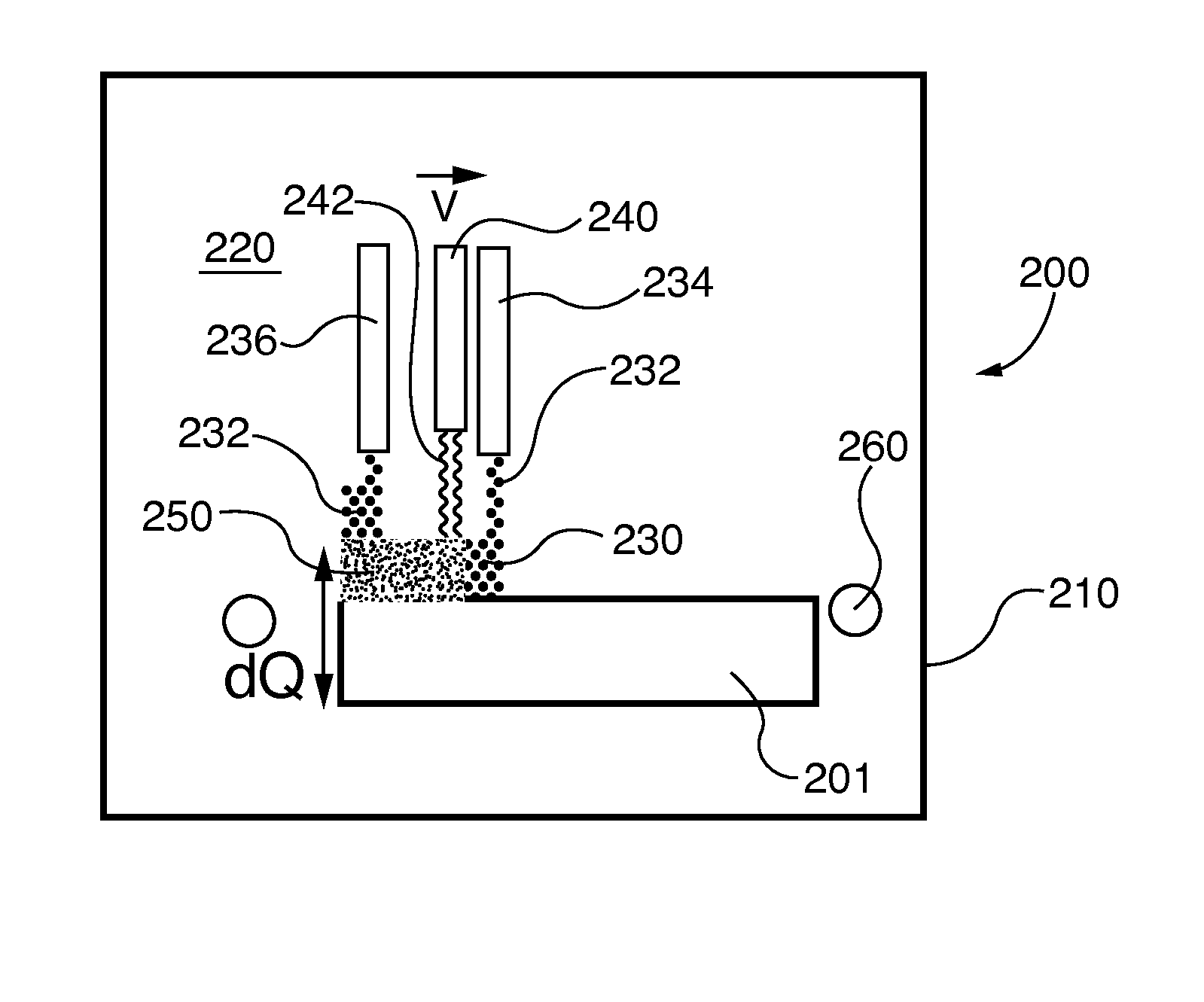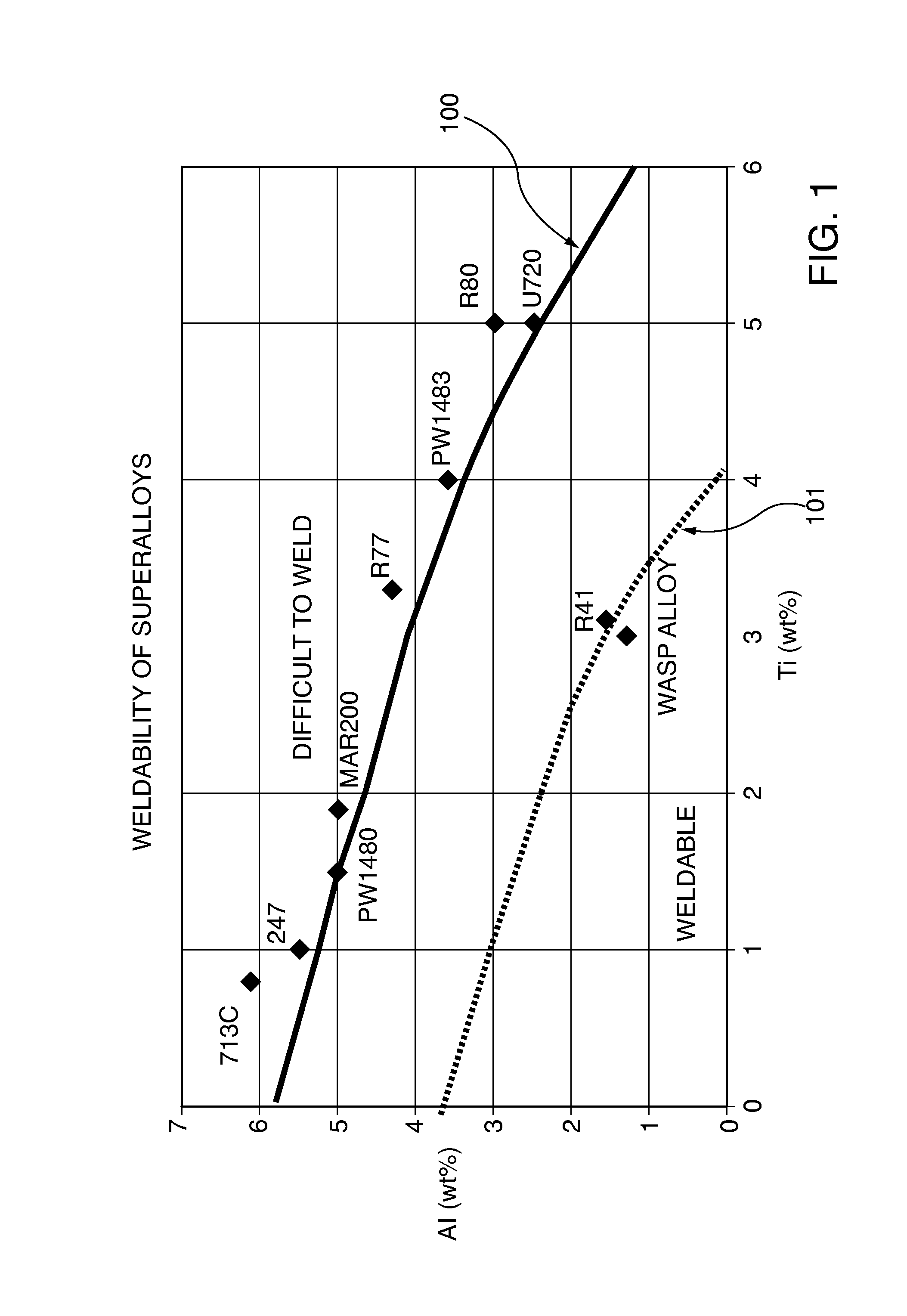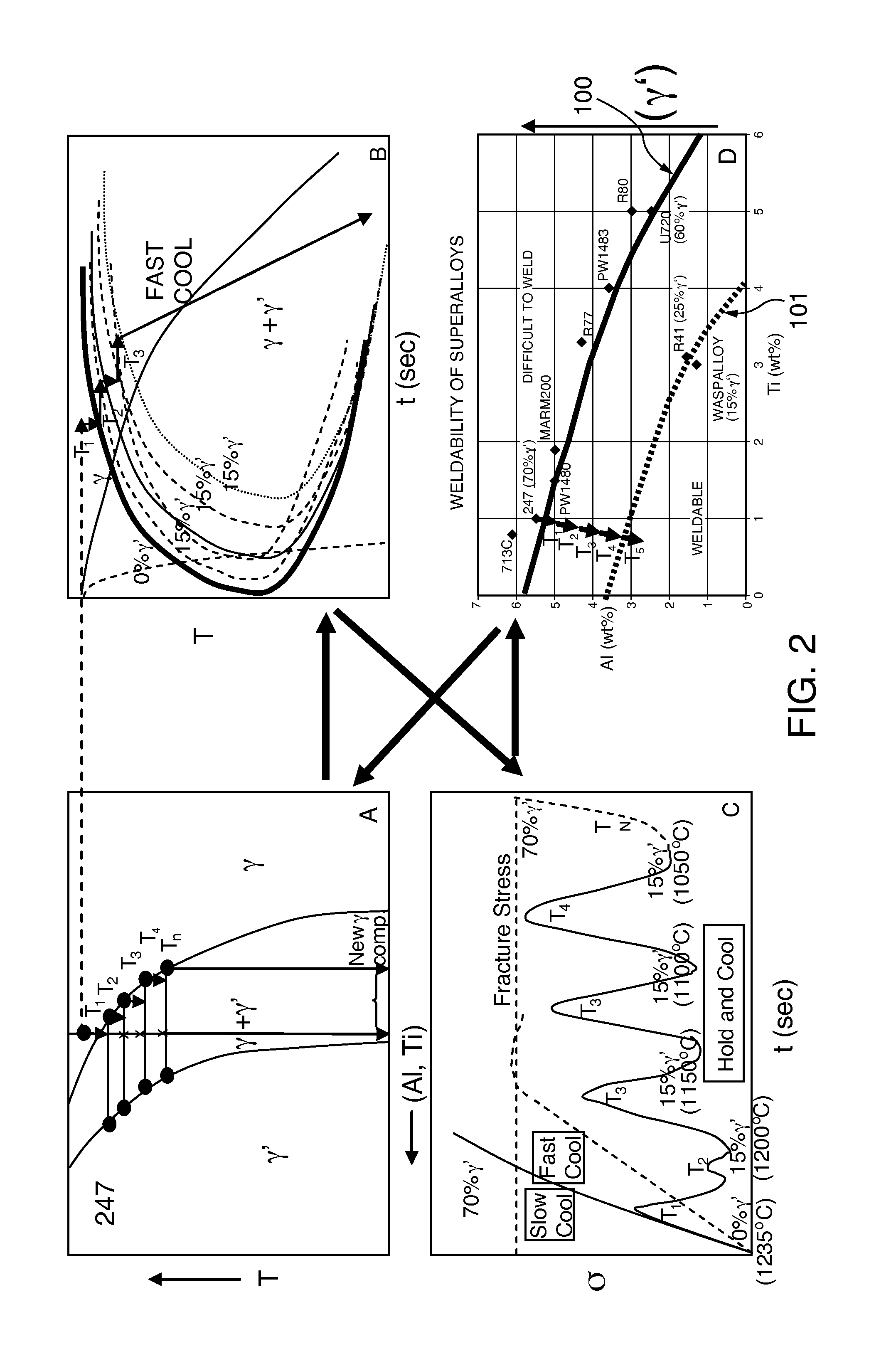Laser additive repairing of nickel base superalloy components
- Summary
- Abstract
- Description
- Claims
- Application Information
AI Technical Summary
Benefits of technology
Problems solved by technology
Method used
Image
Examples
Embodiment Construction
[0020]All percentages given herein are weight percent unless otherwise specified.
[0021]Ti and Al are typically added to Ni base superalloys to increase the high temperature strength of the component, but with the disadvantage of drastically increasing the difficulty of producing satisfactory welds or weld build ups. For economy of language we refer hereinafter to Ni base superalloy with relatively high Al, Ti content as simply “Ni base superalloys” or “Ni superalloys.” The welds or weld build ups typically produced with such Ni superalloys are susceptible to cracking either during the weld or build up process or in subsequent repair steps involving these materials. Previous work by the present inventors (cited above) involving a detailed study of factors affecting weldability of Ni base superalloys and their susceptibility to cracking has led the present inventors to conclude that a γ′ phase present in an amount generally less than about 20 weight percent is indicative of weldabilit...
PUM
| Property | Measurement | Unit |
|---|---|---|
| Length | aaaaa | aaaaa |
| Time | aaaaa | aaaaa |
| Time | aaaaa | aaaaa |
Abstract
Description
Claims
Application Information
 Login to View More
Login to View More - R&D
- Intellectual Property
- Life Sciences
- Materials
- Tech Scout
- Unparalleled Data Quality
- Higher Quality Content
- 60% Fewer Hallucinations
Browse by: Latest US Patents, China's latest patents, Technical Efficacy Thesaurus, Application Domain, Technology Topic, Popular Technical Reports.
© 2025 PatSnap. All rights reserved.Legal|Privacy policy|Modern Slavery Act Transparency Statement|Sitemap|About US| Contact US: help@patsnap.com



